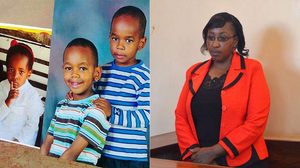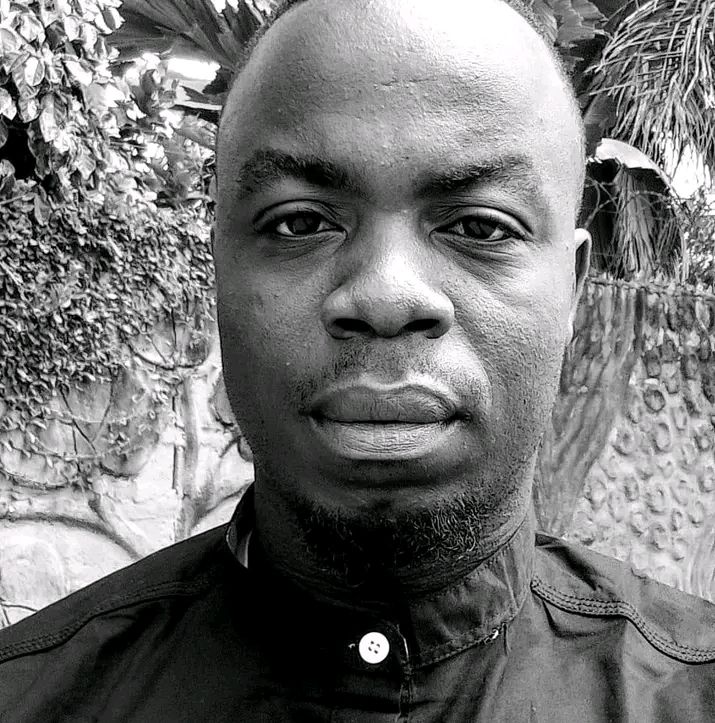Mental Health Mapping Will Expose Service Delivery Gaps
When we talk about a crisis in mental health, it can often feel like an abstract concept. We hear about the statistics—that one in four people will be affected, that services are scarce—but it’s hard to truly see the problem. This is where mental health mapping comes in. In simple terms, it’s the process of systematically taking stock of what we have. It means going out and identifying every single resource: every psychiatrist in public service, every counsellor in a rural clinic, every hospital bed dedicated to mental health care, and even the community support groups that operate on a shoestring budget. It’s about creating a detailed, living inventory of our entire mental health infrastructure.
The challenge in Kenya is no secret. Right now, mental health services are a patchwork of well-intentioned but severely strained efforts. They are unevenly distributed, clustered almost entirely in urban centers, leaving vast swathes of the country with little to no access to professional care. They are critically underfunded, often treated as an afterthought in the broader health budget. And they are desperately understaffed; the few dedicated professionals we have are stretched impossibly thin, trying to meet an ocean of need with a thimble. We know this is the reality, but we’ve been largely operating in the dark, making guesses instead of data-driven decisions.
This is why mapping is so powerful. It takes this invisible crisis and makes it visible. Imagine a single, interactive map of Kenya where you can zoom in on any county and instantly see the stark reality: the regions coloured red for having zero facilities, the distance a family would have to travel for the nearest prescription, and the overwhelming patient-to-provider ratios. This visualization moves the conversation from "things are bad" to "here is exactly where and how things are bad." It transforms anecdotes into evidence. This evidence, this clear and undeniable picture, is our most potent tool for driving change. It arms policymakers, advocates, and communities with the hard facts needed to strategically direct funding, deploy staff where they are needed most, and finally build a mental health care system that leaves no one behind.
Kenya's Mental Health Landscape
To understand why mental health mapping is so urgently needed, we first have to grasp the reality of the current system. Right now, accessing mental health care in Kenya is an uphill battle for the vast majority of citizens. The system is characterized by a few, overburdened facilities, a critical shortage of trained professionals, and a deep-seated stigma that prevents people from seeking help in the first place.
The most glaring issue is the severe lack of public mental health facilities. For many, the name Mathari National Teaching and Referral Hospital in Nairobi is synonymous with public mental health care. As Kenya's only public psychiatric referral hospital, it carries an immense burden founded over a century ago under colonial rule, its history is marred by a legacy of oppression and poor conditions, a stigma that still shadows it today with a bed capacity of around 700, it is intended to serve as the national pillar for the most severe cases. However, this means that for a country of over 44 million people, there is a massive reliance on this single, centralized institution. The consequences are predictable: Mathari is overwhelmed, and those living in rural areas face an almost insurmountable barrier to accessing its services.
This leads to the second major problem: the grossly uneven distribution of services. Mental health care is overwhelmingly concentrated in urban centers like Nairobi and Mombasa, leaving rural and remote regions virtually empty. A recent descriptive survey of four counties in Western Kenya confirmed this stark urban-rural divide. It found that mental healthcare was primarily provided at higher-level facilities, with "minimal structures at primary care facilities". This means someone in a remote village in Busia or Trans-Nzoia county would have to travel long distances, often at great cost, to reach a county referral hospital that might only offer outpatient clinics without any dedicated inpatient beds. This concentration creates "mental health deserts," where entire communities have zero access to professional care.
Compounding the lack of facilities is a critical shortage of human resources. The numbers are staggering. The survey in Western Kenya, which included a major national referral hospital, found only 7 psychiatrists, 25 psychiatric nurses, and 9 psychiatric clinical officers serving the populations of four entire counties. When expanded to the national level, the situation is even more dire, with historical data indicating only about 54 psychiatrists for a population of 44 million people. This means there is less than one psychiatrist for every million Kenyans. This shortage forces the few available professionals to manage impossible caseloads, leading to burnout and compromising the quality of care for those who manage to access it.
Perhaps the most pervasive barrier of all is not brick-and-mortar, but cultural: the profound stigma and low awareness surrounding mental health conditions. This stigma is systemic and deeply entrenched in society, even reflected in the language of outdated laws that use terms like "imbeciles" and "lunatics". A study on epidemiological patterns in Kenya found that 45% of participants had a mental illness, showcasing the high prevalence, yet stigma remains a powerful deterrent to seeking treatment. This stigma has horrific real-world consequences, including the abhorrent practice of shackling people with mental health conditions, a violation of human rights that persists despite being widely condemned. Until this stigma is dismantled, many will continue to suffer in silence, afraid of the ridicule and isolation they might face if they speak up.
What Mapping Will Show
A comprehensive mental health map will do more than just plot dots on a chart; it will tell a story. It will transform our vague understanding of the crisis into a precise, undeniable picture of where the system is failing. Once the data is collected and visualized, several critical and often hidden truths will come to light.
First and foremost, the map will expose the stark regional disparities in access to care in painful detail. We suspect that services are clustered in cities, but the map will show us exactly how deep the divide runs. It will highlight entire counties where the nearest psychiatrist is a six-hour drive away, and it will visually contrast the dense cluster of resources in a place like Nairobi against the vast, empty stretches of the North where there is nothing. This isn't just about distance; it's about visualizing the inequality of hope.
Secondly, the data will reveal a particularly frustrating problem: facilities that exist on paper but lack any trained professionals. It's one thing to have a health clinic in a rural area; it's another for that clinic to have a nurse or clinical officer trained in mental health. The mapping will uncover these "ghost services"—buildings that are meant to serve but stand empty of the necessary expertise, creating a cruel illusion of care for the communities they are meant to serve.
This process will also clearly identify which centers are overburdened and which are underutilized. We already know Mathari Hospital is stretched beyond its limits, but what about the county-level hospitals? The map, combined with patient load data, will show us which facilities are seeing thousands of patients a single professional can't possibly manage, and it might also reveal quieter centers that have capacity but are unknown or inaccessible. This allows for smart, strategic shifts of resources and referrals, instead of the current system where everyone is sent to the same overwhelmed point. Beyond the traditional clinical setup, the mapping will undoubtedly highlight the severe lack of youth and community-based programs. The mental health needs of a teenager are different from those of an adult, and a clinic can feel intimidating. The map will show the desperate shortage of school-based counselling, youth-friendly spaces, and community-led support groups. It will make it clear that while we might be focusing on hospitals, we are missing the opportunity to provide early, accessible, and destigmatized help in the very communities where people live.
Finally, the exercise will expose the glaring deficit in crisis response services. Mental health crises don't happen on a 9-to-5 schedule. A map will show the terrifying gaps in emergency care—the lack of hotlines that are always answered, the absence of mobile crisis teams that can de-escalate a situation at home, and the insufficient number of facilities with emergency psychiatric beds. It will visualize the journey a family in crisis must take, and in doing so, it will show us exactly where that journey breaks down. Mental health mapping will move us from knowing we have a problem to knowing the specific size, shape, and location of each broken piece. It is the essential first step toward building a system that is not only functional but also fair.
How Mapping Will Help Policy Makers And Planners
Right now, making decisions about mental health funding and resources is often a matter of guesswork or reacting to the loudest voice in the room. A comprehensive mental health map would change that entirely, giving policymakers and planners the concrete evidence they need to act strategically and effectively. It would transform their role from putting out fires to building a stronger, more equitable system.
Most importantly, the map would allow them to truly prioritize high-need areas for funding and staffing. Instead of spreading scarce resources thinly and ineffectively across the country, they could look at the map and instantly identify the specific counties and sub-counties that are true "mental health deserts." They could see which communities have the highest prevalence of issues and the absolute fewest resources to deal with them. This means the next budget allocation or hiring drive could be strategically targeted to where it will save the most lives, rather than where it will make the most political noise.
This leads directly to the equitable distribution of resources. The map makes inequality impossible to ignore. When you can visually see that one region has three psychiatrists while another region of similar size has none, it creates a powerful, undeniable mandate for change. Planners can use the data to set clear, fair benchmarks—for example, aiming for at least one mental health professional per ‘X’ number of people in every county—and then systematically work to close the gaps shown on the map. It shifts the goal from just adding more resources to creating a fair and just system.
This is the very essence of enabling data-driven health policy. A map turns anecdotes and assumptions into hard data. Instead of a policymaker saying, "I think we need more services in the coastal region," they can say, "The data shows that the coastal region has a population of 4 million people and only two public psychiatrists, resulting in a patient-to-provider ratio of 2,000,000:1. Therefore, we must invest there." This evidence-based approach makes policy decisions more defensible, more transparent, and far more likely to actually work. It moves the conversation from emotional appeals to irrefutable facts.
Finally, this process is the ultimate tool to support the decentralization of mental health care. Kenya’s devolved system of government is meant to bring services closer to the people, but for mental health, this has been incredibly difficult without a clear picture of what exists at the county level. A detailed map gives county governments the power to see their own specific gaps and needs. It empowers them to craft localized solutions, whether that's investing in training community health workers, building new facilities, or partnering with local NGOs. The national government can then support these counties based on their specific needs, building a stronger network from the ground up instead of trying to manage everything from the top down.
Where we are today
MindTheMap a small non-profit, started out on an expansive mission at the beginning of this year - the mapping of mental health resources and needs across the country, first starting with the most affected counties. We are excited to share what we have accomplished, and what we are most proud to have achieved in such a short amount of time.
Our main accomplishment has clearly been the successful launch of our community-based mental health mapping program. Our small, dedicated group of volunteers has trained over 50 local community health workers in community-based data collection and mental health first aid. These champions are now in the community mapping support services and finding and mapping local resources, ranging from counsellors, support groups and churches to create the first mapped assets in these regions. This is so much more than data, it is a lifeboat for those looking to find help.
On a secondary level, we have also had some success in advocating for the inclusion of mental health objectives in two local ward development plans, and to keep the conversation going at the policy level, while also ensuring that we have begun to document the need on a larger scale. This has all only just begun. We are committed to listening and abiding by the voices of the communities we are working with every step of the way, and we are privileged to be able to help them map a way through this toward a healthier, more sustainable life.









